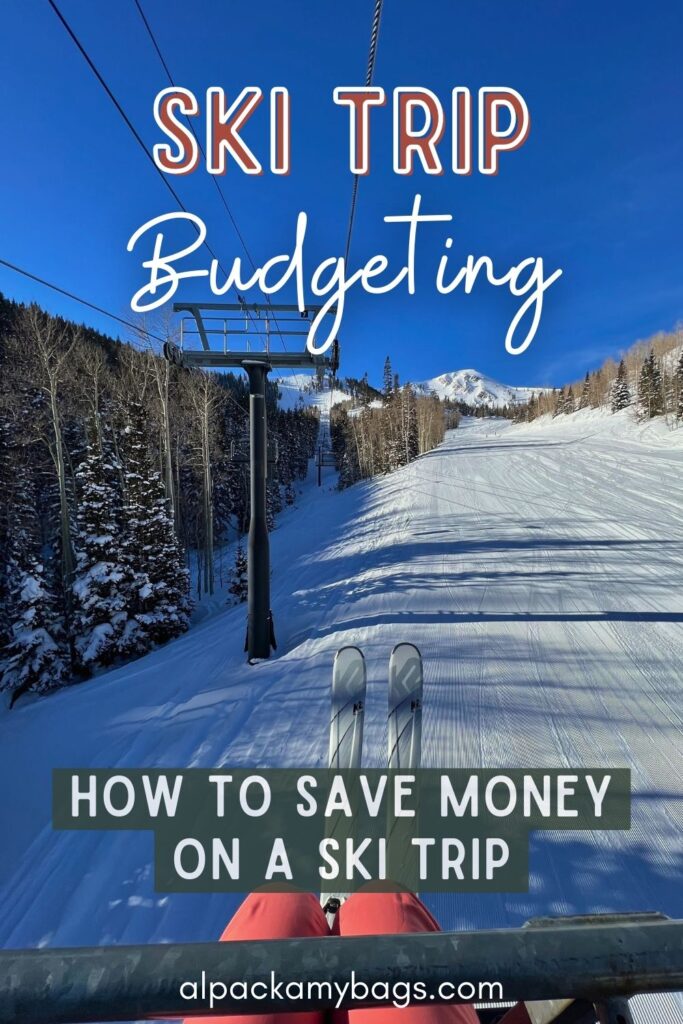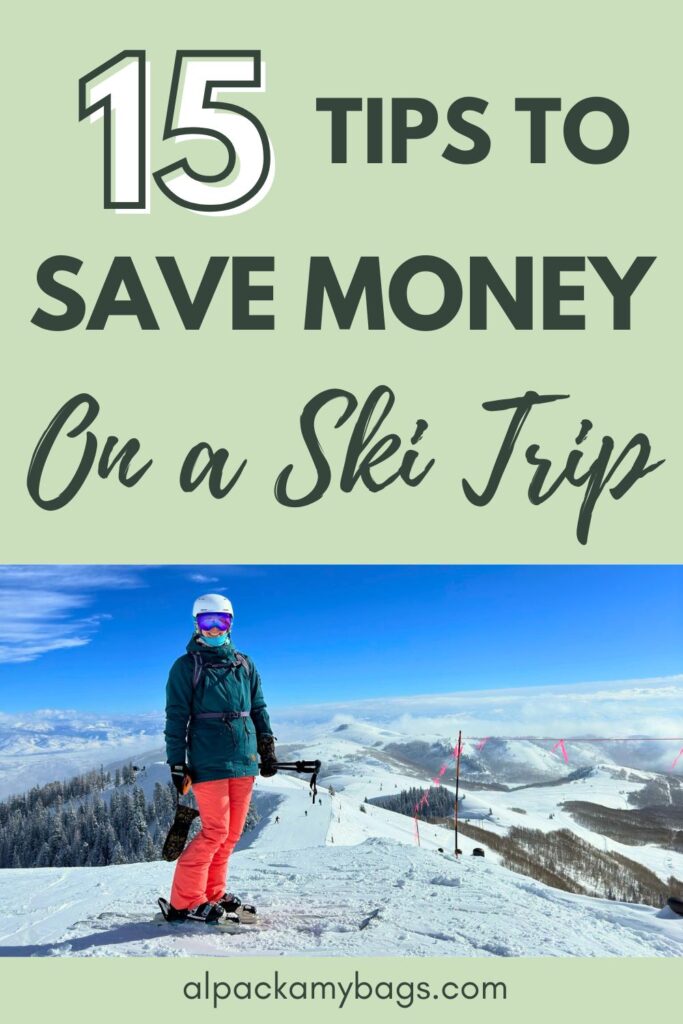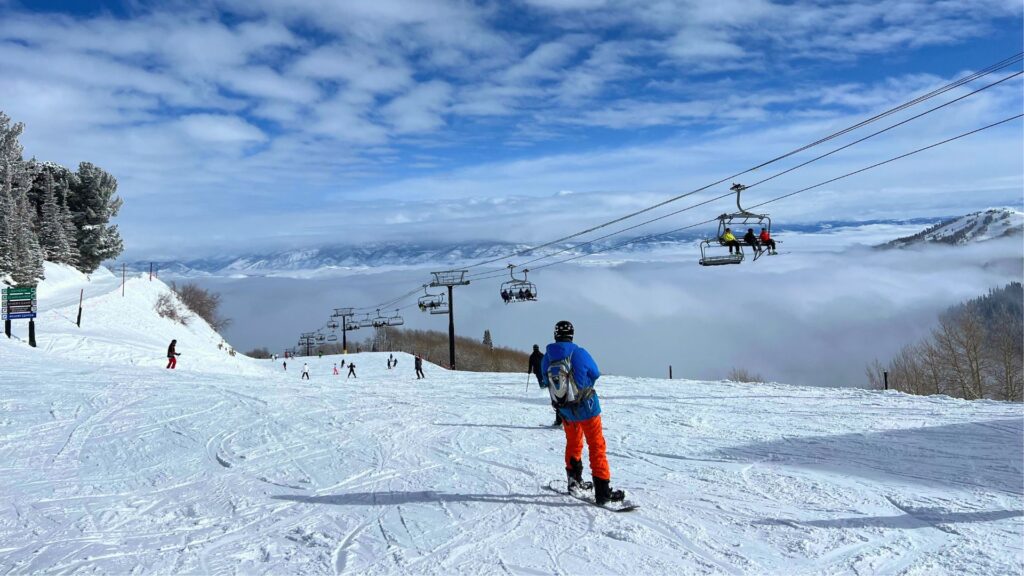
While skiing on a budget can be hard to achieve, there are many ways you can plan a trip and spend less than you think you need to. If you want to learn how to save money on a ski trip, keep reading for my top tips!
I’m always on the lookout for deals and money saving opportunities, and as a ski instructor turned travel planner, I’m here to help you save money when planning your next ski trip.
Disclosure: This article may contain affiliate links, meaning we get a small commission at no extra cost to you if you make a purchase through one of them. Read our affiliate disclosure. Thank you for your support!
Saving Money When Planning a Ski Trip
Check out these ten ideas of how to save money on a ski trip.
Book early to save on accommodation and flights.
Starting off with my number one recommendation, try to plan as far in advance as possible. Start looking at flights and accommodation a few months in advance to compare prices.
Often, hotels and flights are cheaper if you book them ahead of time which will save you money overall. Ski lift tickets can also be cheaper if you purchase them in advance.
Booking in advance will also give you more options when it comes to lodging. If you wait until the last minute, there might only be a few hotel rooms available meaning they can hike the prices for the demand.
Hotels: Look for cheap hotels and vacation rentals on this site.
Vacation Rentals: Find the best budget house rentals on VRBO.
Hostels: For the cheapest lodging, browse Hostelworld.
Rental Cars: Look on DiscoverCars for the best rental car deals.
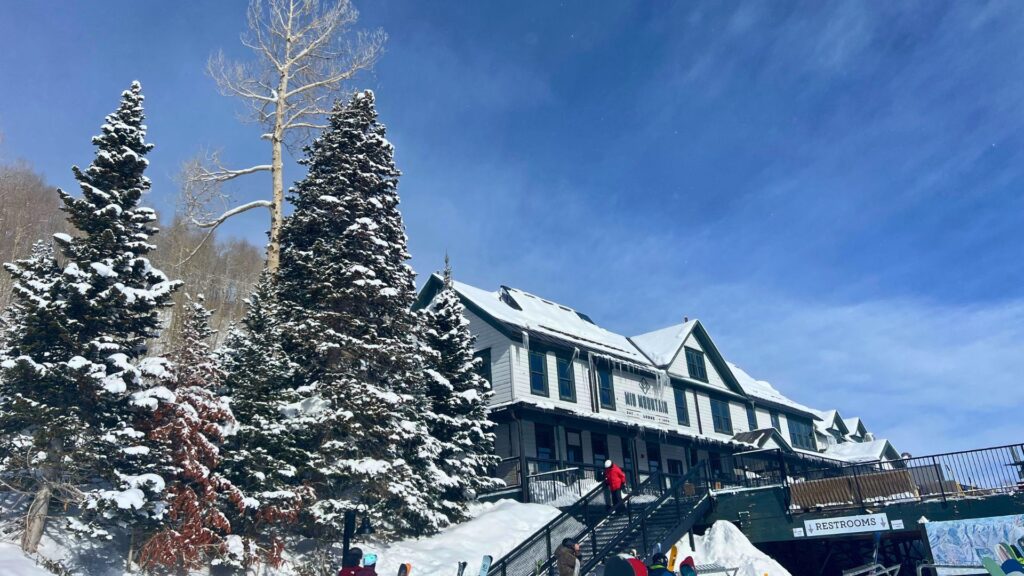
Find accommodation with perks.
Try to look for lodging with free breakfast included and free ski shuttles. These perks will save you a lot of money in the long run.
Filling up with a free continental breakfast at your hotel can hold you over until late lunch and significantly decrease your total food cost. A free ski shuttle can help you avoid paying for a rental car.
Be flexible with timing.
Ski season has highs and lows, and these times affect the prices of lodging, flights, rental cars, etc. Try to plan your ski trip during the slower weeks, i.e. when there are no school holidays or national holidays.
Generally January and February have a few weeks of great skiing. Smaller crowds, cheaper accommodation, less traffic, and spacious ski runs. Take a look at local school calendars or ski resort calendars before booking.
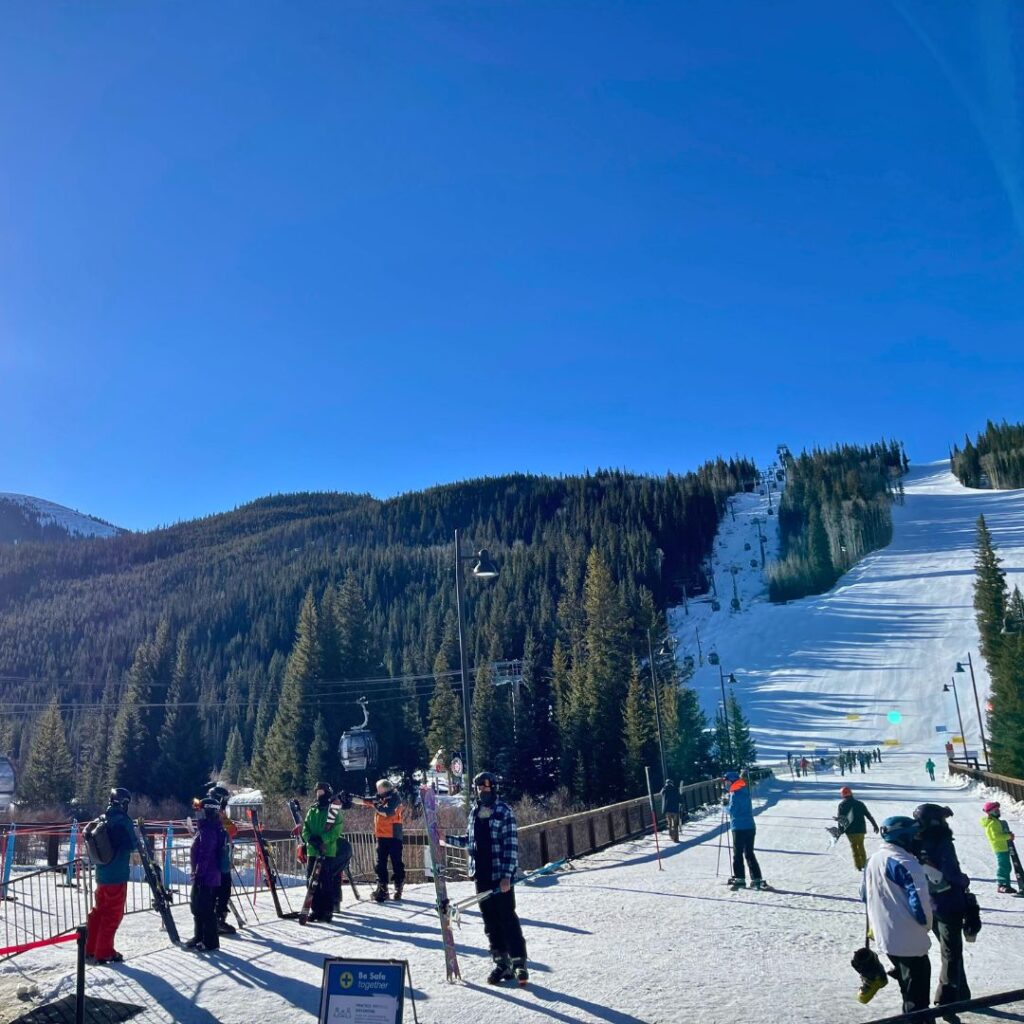
Split hotel costs if you’re traveling in a group.
If you plan on skiing with a group, whether it’s friends or family, ask if anyone in your group is willing to share accommodations. Many ski lodges and vacation rentals have multiple bedrooms so you’ll still get privacy, but your individual cost will be lower if you can split the total cost with friends.
Plus, this is a fun way to travel and spend quality time together. If your ski lodge has a kitchen, you can also save money by cooking large meals with your entire group.
Stay further from the mountain.
While staying at a ski-in/ski-out is as convenient as it gets when skiing, hotels and lodgings closer to the ski lifts are going to be more expensive.
To help you save money on your ski trip, look for lodging further from the ski resort itself. Whether it’s a vacation rental, like Airbnb or VRBO, or a hotel with a free ski shuttle, staying a little out of the way can often save you a lot of money.
Pro Tip: Once you pick a ski resort, find out if there are city buses or shuttles. Many ski towns operate free or cheap public transportation in the winter months to accommodate the many visitors hitting the slopes.
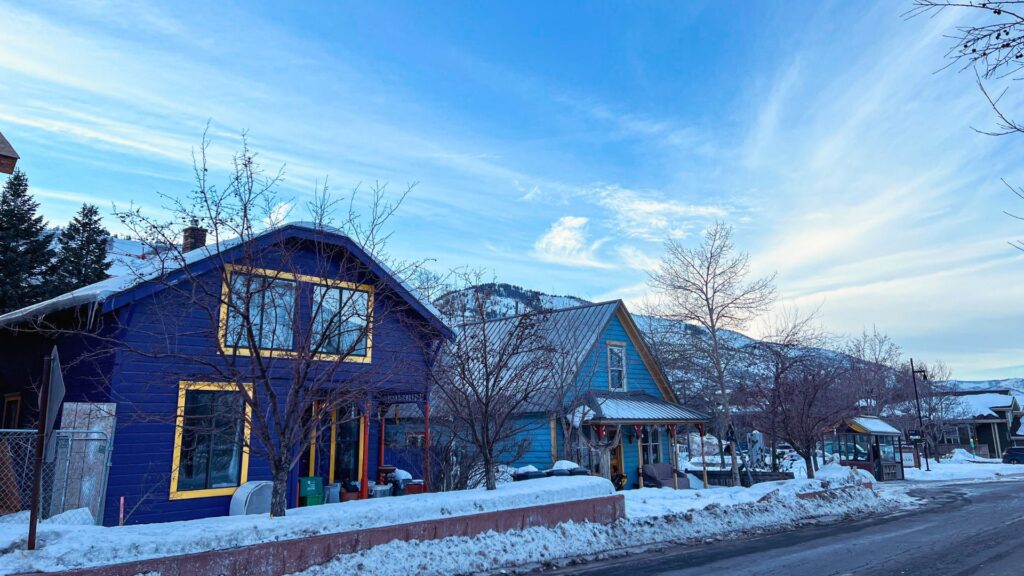
Invest in ski or snowboard equipment.
This is only a good idea if you know you want to go on a yearly ski trip. Having your own gear will save you money over time as you won’t have to keep paying for expensive rentals.
To save money on the actual equipment, try buying secondhand from places like Facebook marketplace or community gear swaps. Always physically check the gear out before handing over money. I found an awesome snowboard this way for a great price and in great condition.
You can also look for end of season sales, typically around March, for marked down gear at places like REI. Once the ski season is over, these businesses want to sell everything they have left in stock to make room for next year’s “new gear.”
Start your ski gear purchasing early and expect it to take a while. If you find a piece of equipment on sale, snag it while you can, even if it sits in your closet for a few months. This process will spread your expenses out over time and cost less in the long run than buying everything in one go and not on sale.
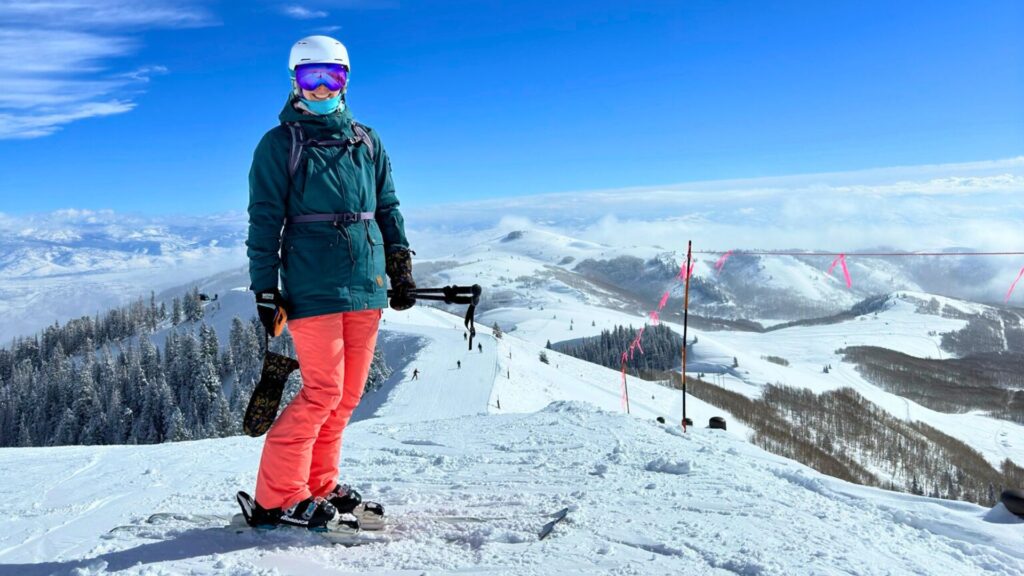
Avoid high baggage fees.
While budget airlines can look very appealing, make sure you know just how much the total will be after paying for your ski bags, seat of choice, and other luggage.
Ski and snowboard bags often fall under the sports equipment category, not normal checked luggage. You often have to pay extra for them, but some airlines include them in your ticket price.
Read the flight details before purchasing your ticket. That super cheap budget flight might end up costing more than a mid-tier airline.
Learn about packing for a ski trip here!
Look for smaller ski resorts.
While big name resorts offer more runs and lifts, they’re also usually more expensive. Smaller ski resorts tend to be cheaper by offering cheaper season passes/lift tickets.
They also tend to be way less crowded, the surrounding towns often have cheaper accommodations than big name ski towns, and even dining can be cheaper at small ski resorts.

Check parking policies if you plan on driving.
Some ski resorts charge for parking and/or require parking reservations. This can easily add $20 to your daily trip cost, so make sure you’re prepared before you opt to drive yourself to the ski resort everyday.
Some ski towns have free (or cheap) buses, like Park City, Utah. If you can find a free parking lot, plan to arrive early so you can park for free and catch the bus or shuttle to the ski lifts.
Plan ski shuttles and airport transfers.
Speaking of ski shuttles, make sure you know how you’re getting from your hotel to the ski lifts. If it’s not within walking distance, are there buses or ski shuttles you can take? Will you need to rent a car and drive yourself?
This also applies to those traveling from an airport to their chosen ski resort. Many ski resorts, like in Colorado, are over an hour from the airport. You can often book a direct shuttle from an airport to a ski resort or you can opt to rent a car instead if you’ll need it during your trip.
Be aware of parking costs if you’re wanting to rent a car as it might end up costing you more than taking a shuttle.
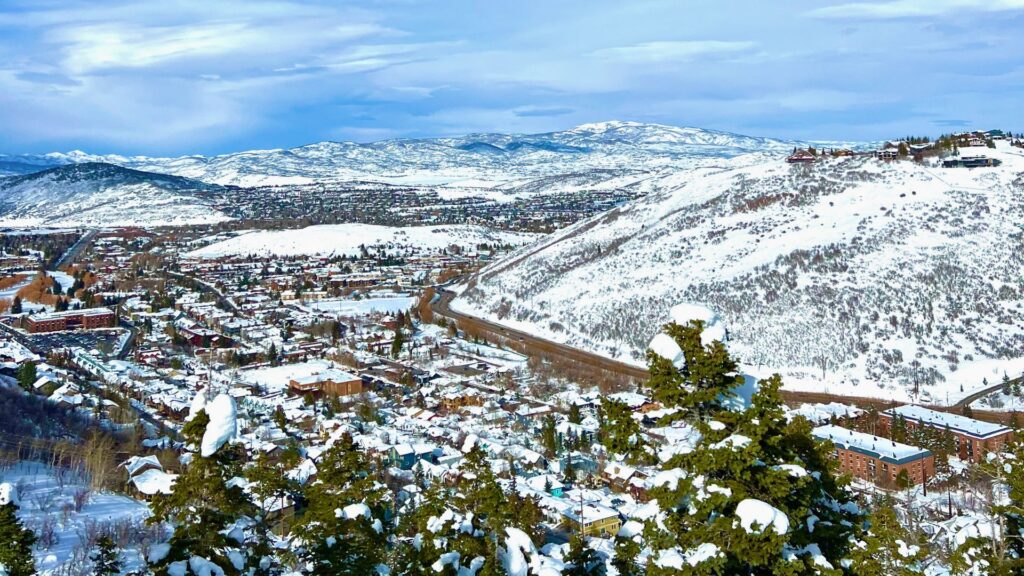
How to Save Money On a Ski Trip
Here are five ideas of how to save money on a ski trip.
Renting equipment.
If you will be renting ski or snowboard equipment, shop around for the cheapest rates. Many ski resorts offer their own ski rental service, but you can often find cheaper rentals in nearby ski shops.
If you’re planning your ski trip to, say, Winter Park, head to Google Maps, pinpoint Winter Park, Colorado, and search “ski rentals” to see what shops offer them. Most websites will include a rental price somewhere so you can compare prices.
It’s also best to book and rent your gear in advance. This will ensure you get the gear that fits you best and allow you time to shop around for cheaper rates.
Avoid buying gear on the mountain.
If you can, arrive at your ski destination with all the gear you need. Avoid buying gloves, goggles, thermals etc. at the ski resort as they’re always more expensive on the mountain.
If you find yourself in dire need of new goggles or gloves, etc. try a ski shop in town rather than directly at the ski resort.
Check out the ultimate ski packing list!

Cook in your accommodation.
Try to avoid eating at ski resort restaurants as they’re typically the most expensive. While it’s fun to stop at a mid-mountain eatery or relax at the resort bar, these places will charge you for the convenience and experience.
Fill up at cheap joints or at your hotel’s free breakfast. You don’t need 5-star meals to get you through skiing, just enough filling food to fuel you.
Pack a lunch and water when you ski as well. This will help you avoid having to stop at a mountainside restaurant and spending a fortune. Plus, water is always essential, skiing and snowboarding are sports after all and require a lot of physical exertion.
If you don’t have a full kitchen, sandwiches make for filling and easy lunches to bring with you.
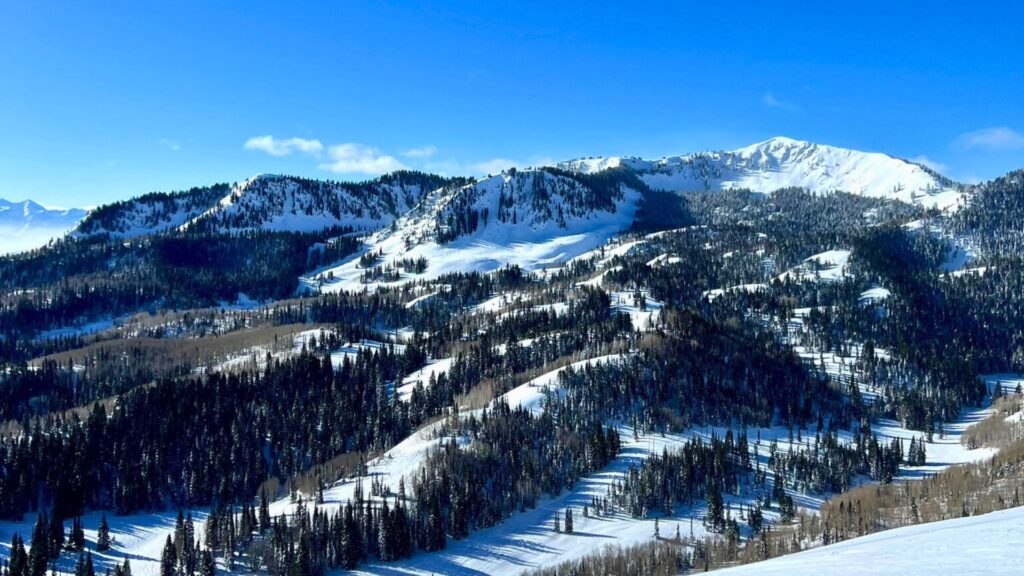
Save with buddy passes.
Some ski resorts or ski passes (like Epic) offer buddy passes, or discounts on extra tickets. If you’re traveling in a group and someone already has their lift passes, ask them to see if they receive any discounts on extra tickets.
You can also often find ski resorts that offer free or significantly cheaper lift tickets for children. If you’re traveling with young ones, check to see if your ski resort offers any deals like this.
Check after hours policies.
Take a look at your ski resorts lift tickets to see if they offer half day passes. Some resorts allow guests to start skiing after a certain time for a cheaper lift ticket, but this obviously decreases the amount of time you’ll get on the mountain.
Sometimes ski resorts will let you hike up the mountain for free after lift hours, but it’s a tough option and you might only get one run in. I’m not recommending this tactic, but it is something to know.
Do not attempt to try this unless you know exactly what you’re doing and know exactly what the resort’s rules are. There will be no ski patrol if you choose to do this, and it will likely get dark quickly.

Ski Packing List & Planning Guide
Get ready for your ski trip with the ultimate ski packing guide. Make sure you have everything you need to stay warm, safe, and comfortable on your budget ski trip.
You can also learn more about planning a ski trip here and use these tips on how to save money on a ski trip.
Skiing on a budget…
With these tips on how to save money on a ski trip, your dream of skiing on a budget has a chance to come true! While skiing and snowboarding are two of the most expensive outdoor activities, they are so worth the price and these tips will help decrease your cost.
If you enjoy getting outside and staying active, and you find snow covered pine trees and mountains pretty, skiing is right up your alley. Go try it for yourself!
